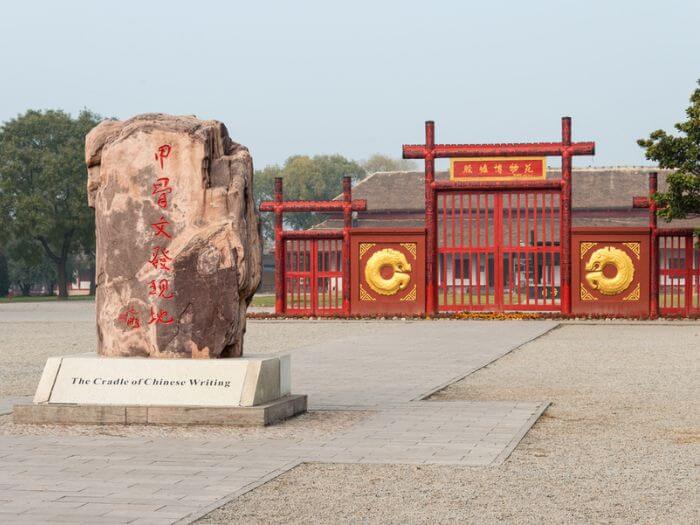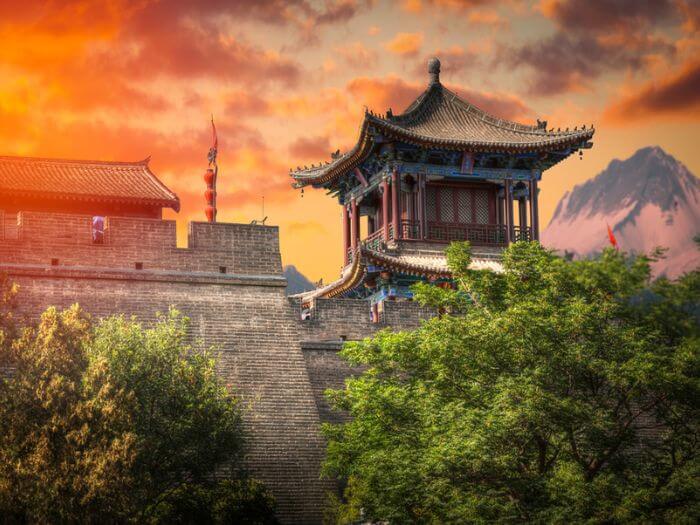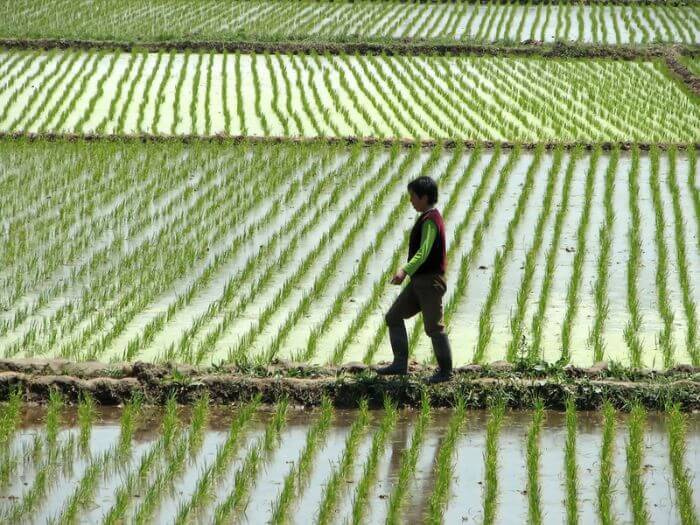Chinese civilisation represents one of the world’s longest unbroken cultures. And Chinese language history traces its origins back thousands of years into the distant past.
But how did the ancient language of the Neolithic and Bronze Age inhabitants of the Yellow River valley and the North China Plain develop into one of the world’s most widely spoken languages?
To answer this question and many more like it, in this post, I give you an introduction to Chinese language history to chart the evolution of this fascinating and globally important tongue.
Pro Tip
By the way, if you want to learn Chinese fast and have fun, my top recommendation is Chinese Uncovered which teaches you through StoryLearning®.
With Chinese Uncovered you’ll use my unique StoryLearning® method to learn Chinese through story…not rules. It’s as fun as it is effective. If you’re ready to get started, click here for a 7-day FREE trial.
Table of Contents
Old Chinese And Its Origins

Although the details of development of very ancient languages are always uncertain, it's thought that the earliest form of Chinese evolved from a theoretical language called Proto-Sino-Tibetan.
This remains an unproven theory, but if true, it would place modern Chinese in the Sino-Tibetan language family, making it a linguistic relative of Tibetan and Burmese.
From this, one of the offshoots evolved into what’s now known as Old Chinese. And the first hard evidence we have of this language comes from inscriptions on oracle bones from the time of the Shang dynasty dating back to around 1250 BCE.
These inscriptions contained divinations and prophecies that were carved into bones and turtle shells using a character-based form of writing that has been established as the direct ancestor of modern Chinese script.
A huge number of oracle bones were found at the Yinxu archaeological site in northern Henan, the location of the last Shang dynasty capital. And it's likely that the Chinese language first emerged in this region.
Scholars have been able to partially decipher and reconstruct Old Chinese, even to the point of being able to understand the grammar and working out how it was probably pronounced.
It seems that, unlike modern Chinese, the language spoken at that time had no tones. Words were almost all monosyllabic, and there was also no inflection – which is a fancy way of saying the words didn’t change according to grammatical function.
Instead, grammar was indicated through word order and grammatical particles.
Classical Chinese And The Emergence Of Regional Dialects

From the Spring and Autumn period (770-481 BCE) to the time of the Qin dynasty (221-206 BCE), there existed a form of the language that’s now referred to as Classical Chinese.
This was the written form of Old Chinese used for classical literature during the period, which also coincides with the time of Confucius (551–479 BCE).
However, at the same time, the vernacular language began to splinter into a range of local dialects that started to diverge from the original language as Chinese speakers spread further into the south of what is now modern China.
This is very similar to the situation that arose with Classical Latin compared to the vernacular Vulgar Latin that eventually developed into the Romance languages like French, Italian and Spanish.
Middle Chinese

By the sixth century CE, Old Chinese had evolved into what’s now called Middle Chinese, the language spoken during the Sui (618-907 CE), Tang (618-907 CE) and Song (907-1279 CE) dynasties.
Middle Chinese had become a tonal language, partly as a reaction to the reduction in the number of vowels and consonants in use – and structurally, it began to resemble modern Chinese more closely.
Much of the evidence for this stage of Chinese language history comes from what are known as rime dictionaries, a kind of dictionary that arranges Chinese characters by rhyme rather than radical.
For example, the Qieyun, an important early rime dictionary published in 601 CE, tells us much about the type of Chinese spoken in Chang’an – modern Xi’an – the capital of the Sui and Tang and one of the largest cities in the world at the time.
The Appearance Of Mandarin And The Rise Of The Beijing Dialect

Following the fall of the Middle Chinese-speaking Song, China was ruled by the Jin (1115-1234), a dynasty founded by Jurchens from the northeast.
After, it was ruled by the Yuan (1271-1368), the Mongol dynasty established by Kublai Khan and visited by Marco Polo in the 13th century.
During this time, a kind of lingua franca developed from the northern varieties of Chinese that were being spoken. By the time of the Ming (1368-1644) and Qing (1636-1912) dynasties, this speech had been adopted as the language of the imperial court.
This language was known as 官话 guānhuà, which means “language of the officials” – in other words, the language spoken by Chinese bureaucrats or mandarins, from which we derive the English expression “Mandarin Chinese”.
Like Middle Chinese, much of our evidence for this early version of Mandarin – which is now known as “Old Mandarin” – comes from rime dictionaries, and it most closely resembled the dialect of Nanjing, the so-called Southern Capital.
(In Chinese 京 jīng means “capital” and 南 nán means “south”, so 南京 nánjīng is the “Southern Capital”. 北 bĕi, on the other hand, means “north”, making 北京 bĕijīng the “Northern Capital”.)
However, the importance of Beijing was steadily rising, and as it did, so did the use of the Beijing dialect as the lingua franca of the imperial court and of business.
As a result, by the 1930s when a standard version of the language was chosen, it was the Beijing dialect that won out and was given the title 国语 guóyŭ or “National Language”.
Modern Standard Chinese

Following the victory of the Communists over the Kuomintang in the Chinese Civil War, in 1955, Guoyuwas renamed 普通话 pŭtónghuà, which means “common speech”. The language was subsequently further standardised, giving rise to modern Standard Chinese.
Modern Standard Chinese, the language most people think of simply as “Mandarin”, is a standardised version of the Beijing dialect.
However, it's not the same as the Beijing dialect since Beijing slang is not considered part of Standard Chinese.
And erhua, the pronunciation of a strong “r” sound at the end of many words, is much more widespread in Beijing speech than in Standard Chinese.
Putonghua is the lingua franca of mainland China and is taught to schoolchildren across the country.
As a result, even those whose native language is another mutually unintelligible version of Chinese – or an unrelated minority language – can usually speak and understand Putonghua.
After the second grade, all education takes place in Putonghua, and nowadays, it's thought that over 80% of the population of the country is able to communicate effectively in this language.
This is also the language studied by most foreign students learning Chinese.
Since Guoyu already existed before Taiwan split from mainland China, the national language in Taiwan is also based on the same dialect.
However, due to over 70 years of separation, the Guoyu (as it's still called there) spoken in Taiwan has already diverged somewhat, especially in pronunciation and vocabulary, from the Putonghua of mainland China.
For more on the linguistic situation in Taiwan, check out my post – what language is spoken in Taiwan?
The Mandarin Dialects

So far, I’ve focused mainly on how Standard Chinese came to be the most widely spoken dialect in China. But now let’s backtrack a little, because Chinese language history is not quite that simple.
During the period when the northern dialects were rising to prominence as the language of court and of business, most people throughout China still only spoke their local version of Chinese.
In a great arc that runs from Dongbei (东北 dōngbĕi, the “northeast”) through Beijing and the surrounding provinces down as far as Sichuan, most people speak dialects that are related to Beijing Chinese.
These are known as the Mandarin dialects, and when taken as one, they constitute the most widely spoken first language in the world.
However, these Mandarin dialects are not the same as what most people think of as “Mandarin” – and many of them are very different from Standard Chinese.
Rather, they are a large collection of dialects that are not necessarily mutually intelligible.
For example, Sichuan Chinese is considered a Mandarin dialect, but a Beijinger would have a very hard time understanding much of a conversation held in Sichuanese.
This is why referring to Standard Chinese simply as “Mandarin” is not technically correct – it's more properly called Standard Mandarin, Standard Northern Mandarin, Standard Beijing Mandarin, Putonghua or just Standard Chinese.
But there’s more to it than just that because the Mandarin dialects are far from being the only version of Chinese that exists, so let’s look at this now.
The Influence Of Geography On Chinese Language History

In modern China, there is a perceived difference between the peoples of the north and the south of the country, something that is supposedly reflected in aspects like culture, character, physical appearance and cuisine.
However, while many of these are just stereotypes, the north/south divide undoubtedly had a marked effect on Chinese language history as Chinese speakers dispersed throughout what is now modern China.
The north of China is dominated by the large and fertile North China Plain, a flat area with relatively few rivers. This region was particularly well-suited to fast travel by horse, and as a result, the many dialects of northern Chinese experienced less divergence.
However, in the south, a region crisscrossed by rivers and mountain ranges, the situation is very different.
The geography of southern China was far more conducive to producing linguistic diversity, and as a result, at least six other major varieties of Chinese branched off at about the time when people were speaking Middle Chinese.
Other Chinese Varieties

As I’ve already mentioned, if you consider the Mandarin dialects a single language, they constitute the most widely spoken one in the world.
But other versions of Chinese exist that have enough speakers to make them major languages in their own right.
Wu Chinese is the variety of Chinese with the second largest number of speakers. It's spoken mainly in Zhejiang and Jiangsu provinces and includes dialects such as Shanghainese and Suzhounese.
It's thought to have over 81,500,000 speakers, making it the 18th most widely spoken language in the world.
After this is Yue Chinese, of which Cantonese is the prestige dialect. Yue Chinese has 75,500,000 speakers, placing it 23rd on the list of the most widely spoken languages in the world.
This is followed by Southern Min Chinese, with about 50,500,000 speakers and Hakka Chinese with 48,500,000 speakers. Other major varieties include Gan and Xiang, and some scholars count even more.
Within China, these different varieties are thought of as being just one language, 中文 zhōngwén – simply “Chinese”.
However, due to the amount of divergence and the lack of mutual intelligibility, many linguists outside China prefer to think of them as separate Chinese languages belonging to the same family.
It could be argued that referring to them all as just “Chinese” would be akin to insisting that the various Romance languages are all still just dialects of Latin.
But this debate is far more complex than we have space for here, so I won’t go into it any further!
Overseas Chinese Communities And Chinese Language History

Of course, versions of Chinese are now spoken in many other parts of the world, so what languages do overseas Chinese communities in other Chinese speaking countries speak?
Since the waves of Chinese emigration happened long before the establishment of Guoyu or Putonghua, overseas Chinese communities continue to speak the languages and dialects of the regions from where their ancestors departed, often many hundreds of years ago.
Because many of the migrants came from the south of China, the southern varieties of Chinese are well represented in places with major Chinese populations like Malaysia.
A linguistically and culturally fascinating place to visit is the Malaysian city of Malacca, where you can hear a wide range of Chinese dialects being spoken, including Cantonese, Hokkien, Teochew, Hainanese and Hakka.
In Thailand, the country with the largest overseas Chinese population in the world, the dominant dialect was Teochew, a Southern Min dialect spoken in the Chaoshan region of Guangdong province.
As a result, Teochew has given Thai a great many loanwords, especially things related to Teochew cuisine.
However, nowadays, most Thais of Chinese descent are so integrated into Thai society that they no longer speak Chinese languages, speaking only Thai.
Chinese Language History FAQ
Where did the Chinese language come from?
The Chinese language originated thousands of years ago in the Yellow River basin of northern China.
It evolved from Old Chinese (also called Archaic Chinese), the earliest known form, which dates back to at least 1250 BCE and was used in the Shang Dynasty for inscriptions and oracle bones.
What language are Chinese descended from?
Chinese is part of the Sino-Tibetan language family and is primarily descended from Old Chinese, which developed into Middle Chinese and later diversified into various dialects and regional languages, including Mandarin, Cantonese, and Hokkien.
Which Chinese language is the oldest?
Cantonese is often considered closer to the phonetics of Middle Chinese, making it older in terms of retaining ancient sounds and tones.
However, Mandarin evolved directly from Northern dialects of Middle Chinese but underwent significant phonological changes.
Cantonese and other southern dialects preserve many older characteristics.
Did Cantonese or Mandarin come first?
Cantonese preserves more of the features of Middle Chinese, making it more linguistically similar to older forms of Chinese.
Mandarin, in contrast, developed later in northern China and became dominant in the Yuan and Ming Dynasties, eventually becoming the basis for modern Standard Chinese (Putonghua).
Chinese Language History: Fascinating History & Language

Today, some form of Chinese is spoken by at least 1.3 billion people as their first language. And the Mandarin dialects constitute the world’s most widely spoken language.
When second-language speakers are included, Standard Chinese is second only to English in its total number of speakers worldwide.
Due to the rise of China as a major world power, Chinese has become an incredibly popular language to study.
And learning Chinese can open doors to countless career opportunities while also introducing you to one of the world’s most enduring and fascinating cultures.
So while Chinese might not be counted among the easiest languages for English speakers to master, if you're up for the challenge, you can look forward to the enriching experience of learning a language with 3,000 years of Chinese language history.

Olly Richards
Creator of the StoryLearning® Method
Olly Richards is a renowned polyglot and language learning expert with over 15 years of experience teaching millions through his innovative StoryLearning® method. He is the creator of StoryLearning, one of the world's largest language learning blogs with 500,000+ monthly readers.
Olly has authored 30+ language learning books and courses, including the bestselling "Short Stories" series published by Teach Yourself.
When not developing new teaching methods, Richards practices what he preaches—he speaks 8 languages fluently and continues learning new ones through his own methodology.










































